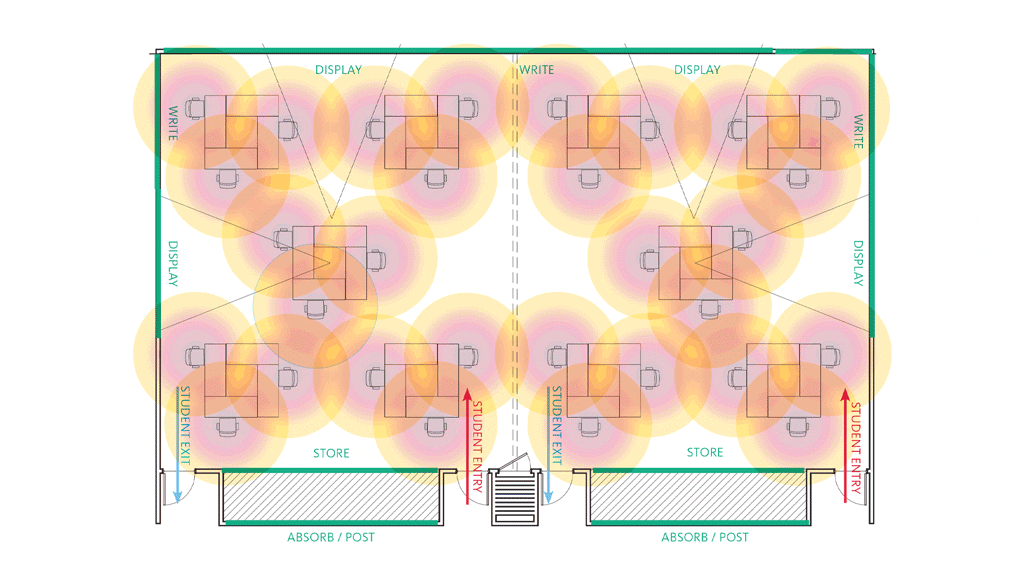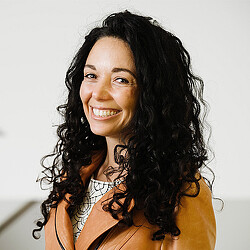6 Considerations for Transitioning Back to School
May 28, 2020 | By Patricia Nobre, Mark Thaler, and Richard Jacob
Editor’s Note: This post is part of our ongoing exploration of how design is responding to the COVID-19 pandemic.
Across the globe, classrooms sit unoccupied. In a matter of weeks, schools have had to pivot to distance learning, while striving to maintain learning outcomes and student engagement in a context of intensified inequity and difference.
The pandemic has spurred incredible changes for education institutions around the globe, but it’s not over yet. There will be many more significant changes to come. In the meantime, our clients are grappling with how they can plan, communicate, and transition hundreds to thousands of students, educators, researchers, and staff back to school with new guidelines and policies that can maintain the health of both their campuses and the broader community. They’re asking: How do we start planning the transition back to school when the time comes? What can we start doing now?
There is no universal approach to reopening schools and campuses, and each institution must navigate the complexities and nuances of its multiple communities. Nevertheless, we have outlined some considerations, tools, and methodologies based on our work with clients that may help guide other institutions facing these unprecedented challenges.
Here are six considerations for transitioning back to school:
1. Learn and prioritizeThere is no consensus on what the 2020 Fall term will look like because no two institutions are alike. Colleges and universities are exploring a range of in-person, online, and hybrid models to best accommodate their evolving needs. It’s critical that re-entry strategies be catered to the unique profile of each campus community and each unique learner.
Gensler’s Education Engagement Index is a diagnostic tool to measure engagement, learning effectiveness, and the student experience throughout the COVID-19 crisis. The proprietary, web-enabled Learning From Home survey tool analyzes how learners previously engaged with education, how they are currently learning remotely, and gathers insights, concerns, and distills what matters most when they return to school after the pandemic.
Focusing on the key modes of learning and how different users engage with learning, this tool empowers institutions with the insights they need to understand what’s working well, what’s not, and what activities and users to prioritize in a phased re-entry strategy.
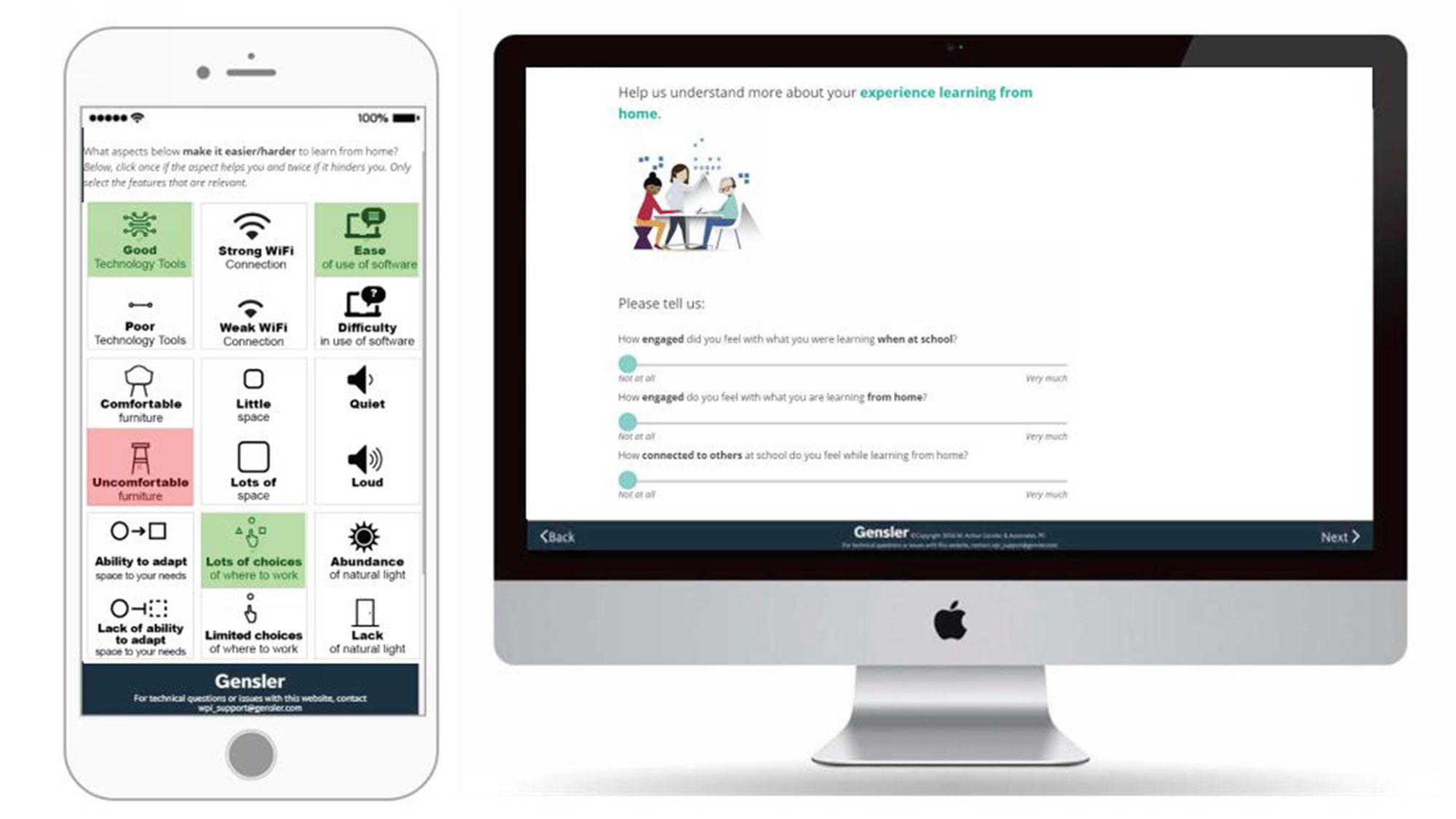
Future uncertainty and lack of baseline metrics and best practices have left many colleges and universities without long-term re-entry plans. Institutions are exploring which programs, projects, and initiatives to prioritize in a re-entry strategy and how to prioritize space use for programs that depend on hands-on research and learning. Entire campuses, now largely vacant, are being looked at with fresh eyes to determine how the existing layout of desks and furniture can be assigned to accommodate the latest recommendations for safe physical distancing.
Using generative algorithms, Gensler has developed a physical distancing tool, ReRun™ — a data-driven process for post-COVID occupancy planning. Using the existing layout of a range of academic spaces, ReRun can quickly generate many scenarios and identify the most optimized plan for a variety of physical distancing conditions, whether an institution has hundreds or thousands of users.
As educational institutions begin to phase in more students, faculty, staff, and researchers, ReRun can continue to generate scenarios that increase in density to help inform campus-wide return planning strategies.

We’re seeing institutions with hundreds or thousands of users challenged with the logistics of planning phased re-entry models. Many institutions are finding the need to develop distinct re-entry strategies that focus on students, faculty, staff, and researchers. The timing and sequencing of phasing groups back in can be informed by varying priorities and risk assessments.
Residential campuses, for example, must reevaluate how many students they can safely house on-campus, off-campus, and in temporary housing solutions. Commuter campuses are looking at what resources they have to support simultaneous virtual and in-person learners.
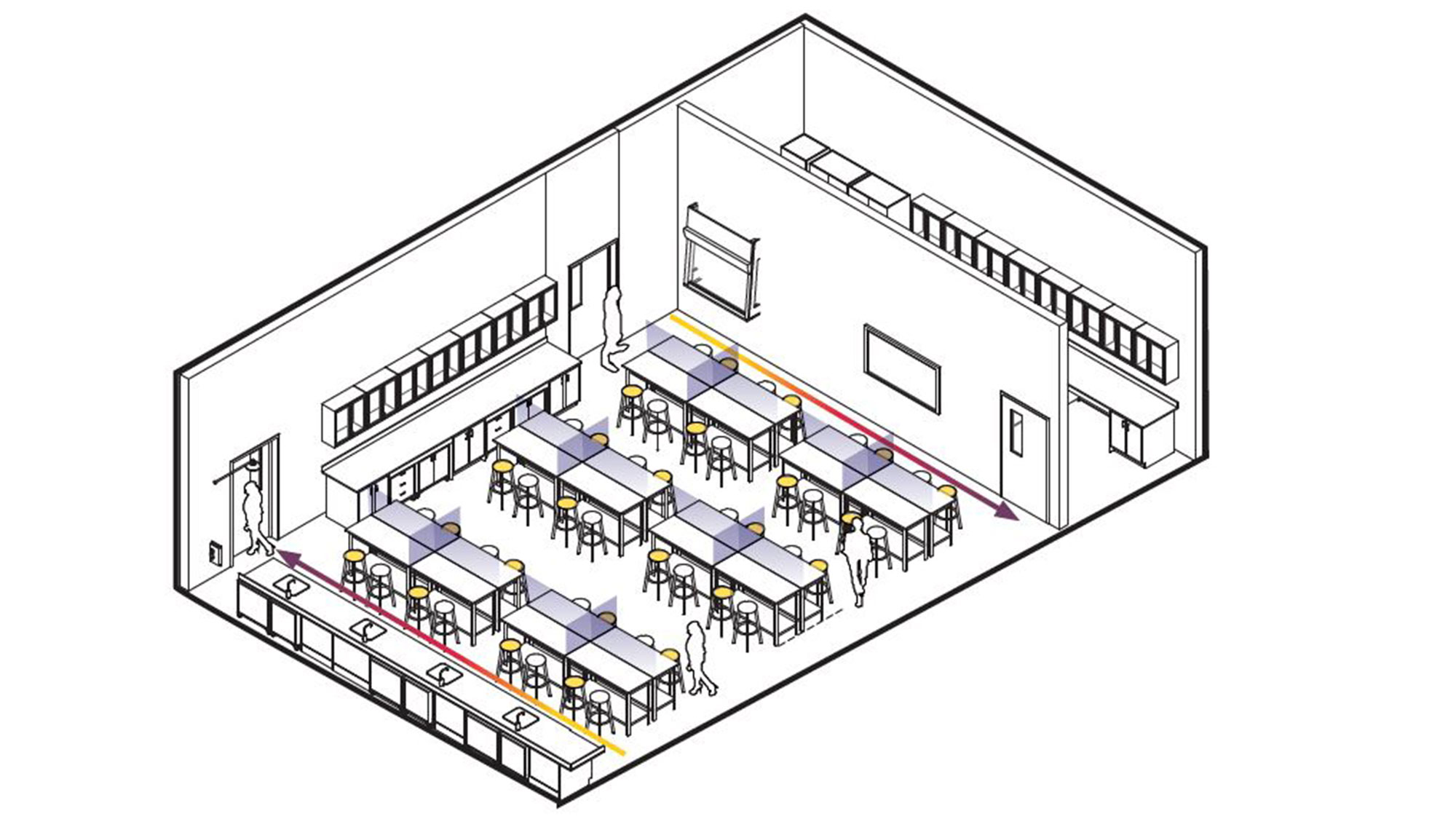
The nature of the academic campus, given the 24-hour collective intimacy of the environment, makes it especially vulnerable to infectious disease transmission. Re-entry plans must be based on the reality that there will be resurgences of the disease until a vaccine is developed, and schools must use this opportunity to build resilience to future outbreaks. Colleges and universities cannot afford to send everybody home every time there is a resurgence. Institutions will be pressed to develop public health plans that focus on safely handling the possibility of infection while maintaining the continuity of their core academic functions by testing, tracing, and isolating.
To mitigate the spread of COVID-19 throughout the campus, institutions are studying mandatory screening protocols for all users before they leave their dorms or enter the academic spaces. The results of the screen will indicate whether the individual should enter the academic spaces or remain in isolation.
The need to facilitate contact tracing has many institutions rethinking the use of unassigned seating and the rotation among classrooms. Knowing where users are seated and their likely circulation paths throughout the day can support a focused cleaning response if a person does exhibit symptoms, and also indicate other users assigned to the same vicinity.
Testing and tracing will be impactful only if users who are ill or have been exposed to the virus can be isolated. While solutions will vary for different users who may or may not live on campus, temporary isolation spaces will become a necessity. Considerations should be taken for special cleaning protocols in these spaces, ideally with special ventilation or negative air pressure to further reduce exposure to others in the area.
5. CommunicateAs students, faculty, staff, and researchers step carefully back onto campuses, they will need to shift their behavior, interactions, and ways of moving through space. Communication will play a critical role in keeping all users healthy, helping people feel safe, facilitating new habits, setting a new precedent for interactions, and building a renewed sense of community. Gensler is developing a range of signage packages that make it easy for academic institutions to help their communities feel safe while strengthening the sense of community and of a common purpose.
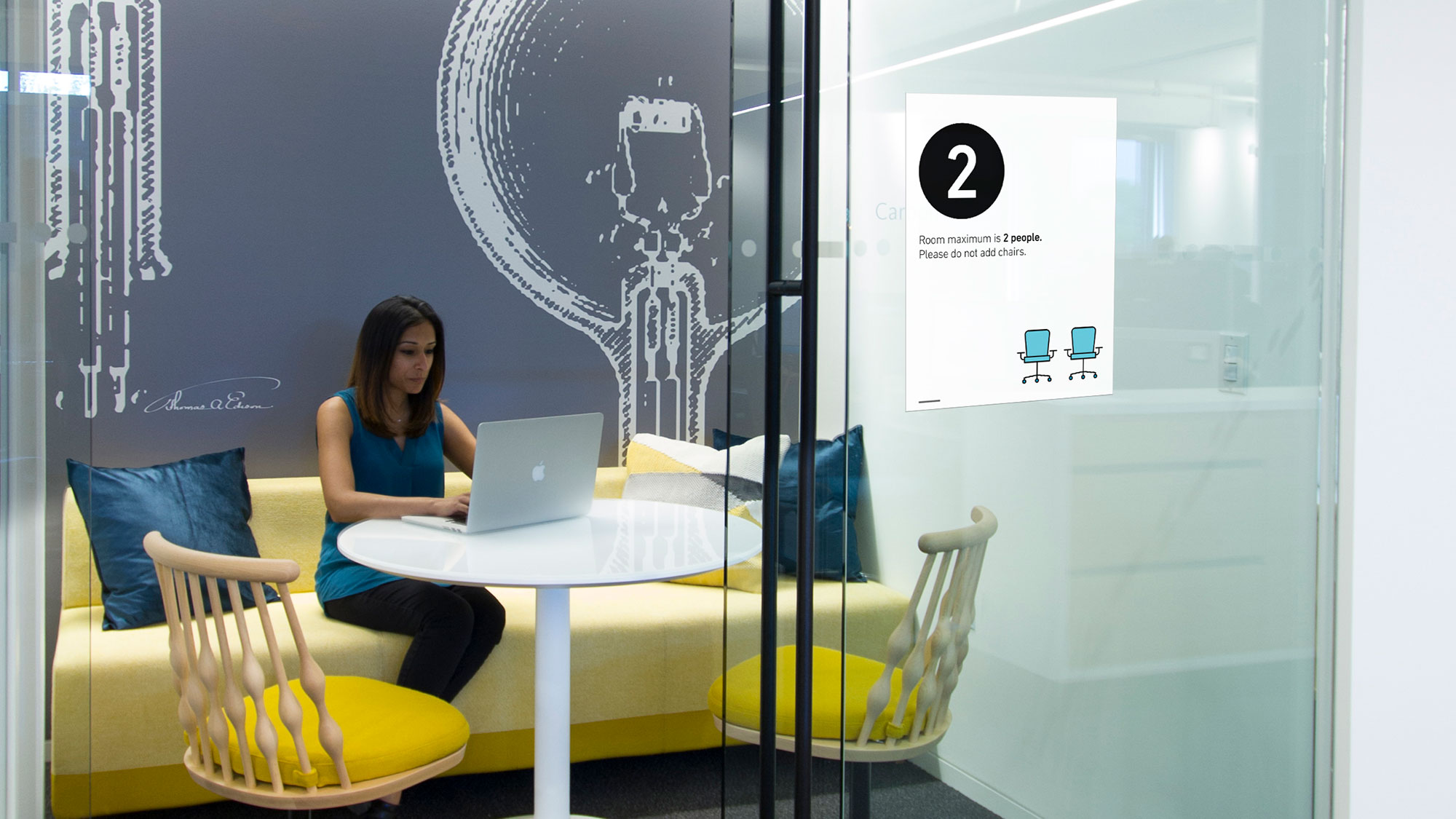
Beyond signage and wayfinding, communication around cleaning protocols will be key. With cleanliness at the forefront of people’s mind as they return to school, institutions need to plan, communicate, and enforce cleaning regimens to support services and users. Identifying which spaces are assigned to users, and when, will help cleaning services prioritize their work. Adding physical indicators, such as printed cleaning schedules and signage, can strengthen confidence that the spaces have been attended to.
6. AdaptThe future is uncertain. By ensuring that robust feedback loops are in place, colleges and universities will be armed with the insights to continuously learn and reinvent themselves to respond to a rapidly changing landscape. As educational institutions begin to welcome people back to school, Gensler’s Education Engagement Index survey tool can generate insights on what is working well, what is not, and what matters most to different users to continuously inform long term campus-wide planning strategies.
As students, faculty, staff, and researchers begin to return to school, institutions can leverage adaptable sensors to track utilization and support density reporting requirements. Each re-entry phase will provide institutions with the data to build spatial analytics models to understand patterns (density, interactions, and touch-points) and develop metrics and measures to evaluate the feasibility of future state scenarios.
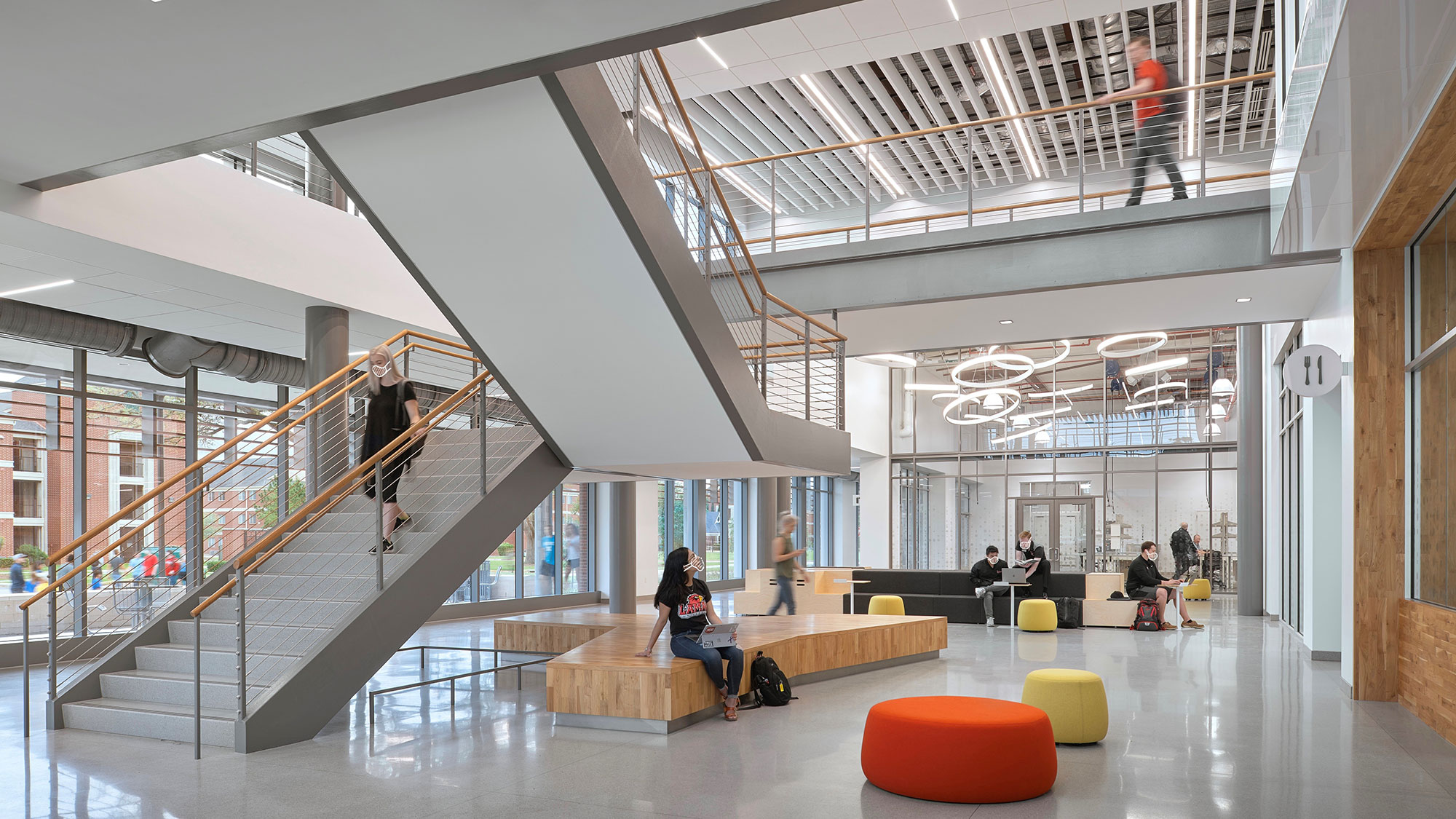
As we proceed into the months ahead, and colleges and universities plan for the return to school, we hope these considerations can support the balance of furthering the mission of each academic institution and the safety of every community.
To begin a conversation about how these tools can support you now and into the future, please contact us at .
For media inquiries, email .
Editor’s Note: This post is part of our ongoing exploration of how design is responding to the COVID-19 pandemic.
